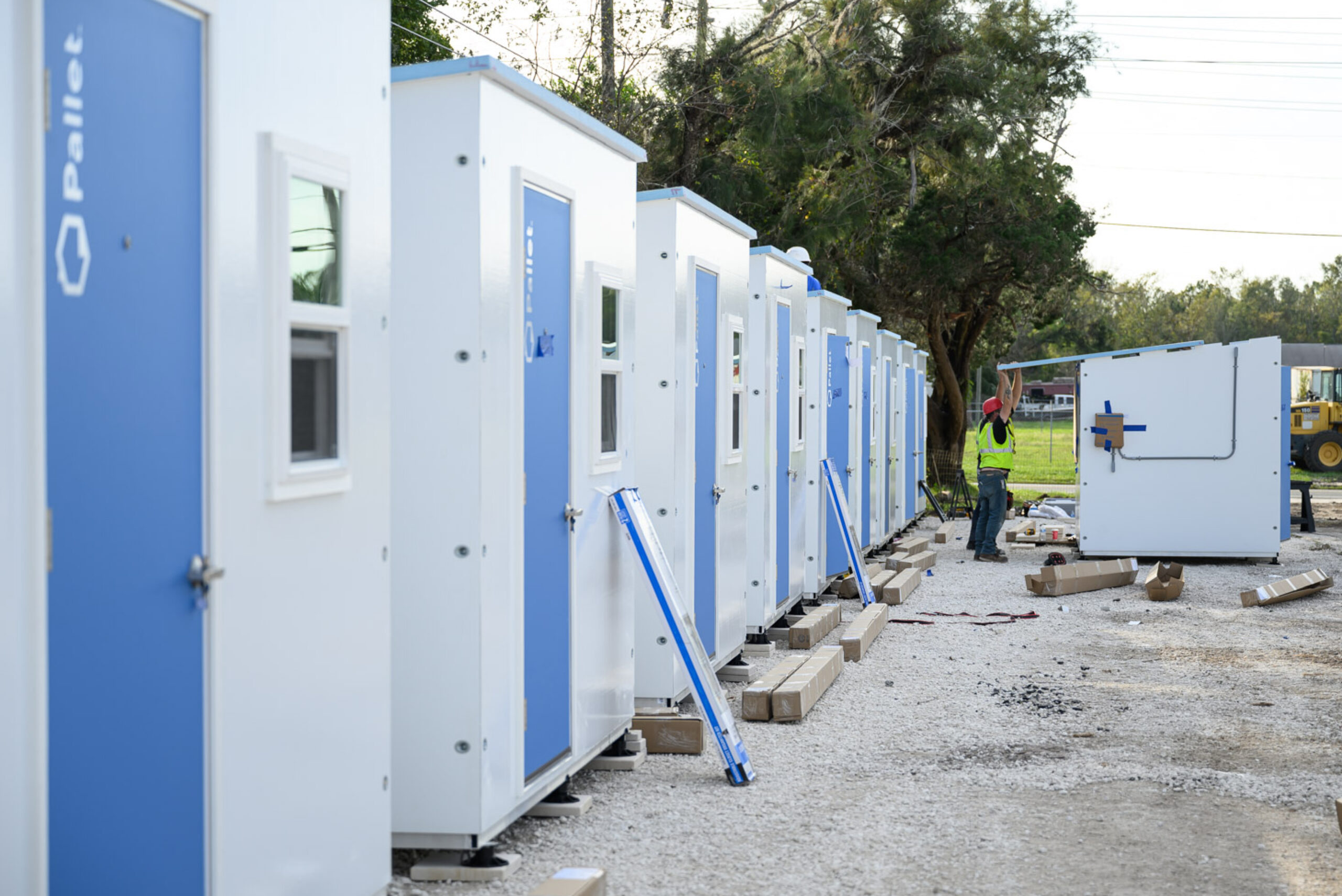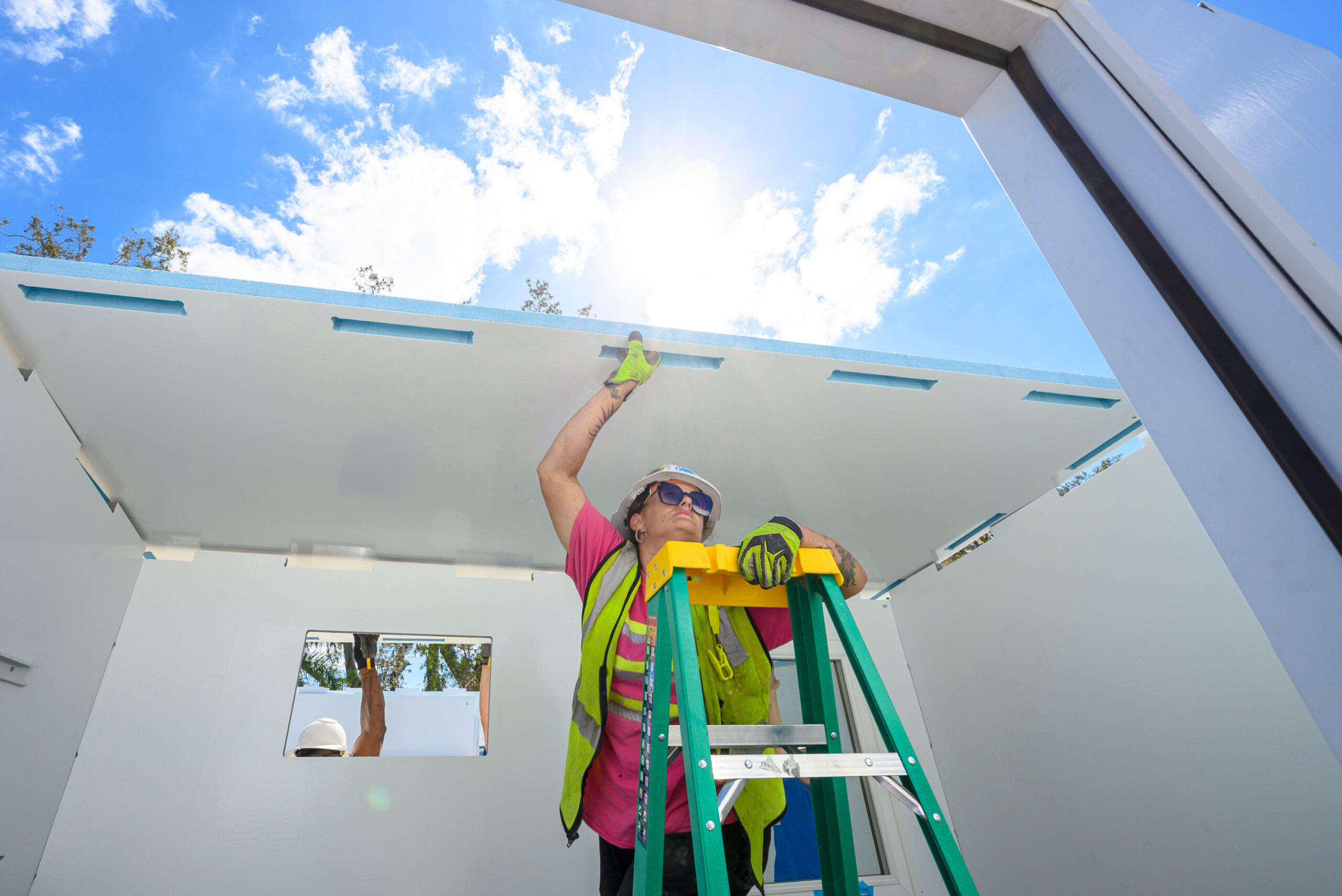Understanding the Post-Disaster Housing Continuum
November 29, 2023
In the wake of natural disaster, an inclusive range of shelter and housing models is critical to meet the immediate needs of every displaced individual.

Following destructive events like hurricanes, flooding, and wildfires, large populations are suddenly displaced from their homes and forced to find refuge wherever it is available. People are often directed to arenas, schools, community centers, or other public buildings to find a safe place to stay—at least for the night.
What comes after this stage is filled with uncertainty. To fully understand the landscape of shelter and housing options in the wake of natural disaster, it’s important to consider that each community has diverse needs. Examining the scope of housing models and offering equitable aid to displaced populations lays the groundwork for sustainable recovery.
Read on to learn the language and timeline of the Post-Disaster Housing Continuum.
1. Post-Disaster Housing Continuum
The stages of shelter and housing presented on a timeline starting immediately following a destructive event. From emergency shelter models to the prospect of rebuilding permanent housing, the path of the continuum follows a displaced person’s housing journey after an emergency.
Each stage offers specific benefits and are either based on existing infrastructure or constructed for the specific purpose of sheltering disaster survivors.
2. Emergency Preparedness
Before a disaster occurs, communities can build resilience through comprehensive preparedness planning. This includes drafting plans for staffing emergency response teams, arranging amenities such as food provision and hygiene facilities, and stockpiling rapidly deployable emergency shelter options that can be used to accommodate both responders and displaced communities.
This stage is fundamental to create true resilience, equipping cities to recover more quickly and effectively in the wake of disaster.
3. Emergency Congregate Shelter
Perhaps the most familiar of post-disaster shelter models, this stage is occupied in the days (or even hours) following an event or evacuation order. Stadiums, gymnasiums, and other large public buildings are used to rapidly shelter large groups of displaced people under one roof.
While effective at providing a space for large populations, this stage tends to present high barriers even when outside conditions are unsafe. People with pets and those with specific prior offenses are not permitted to stay in congregate settings, and people with trauma from violence and sexual assault do not feel secure in large, open settings with others.
4. Interim (Recovery) Shelter
Individual interim shelters can be deployed and assembled rapidly, and communities can be tailored to the needs of specific groups (people with disabilities or medical needs, first responders, relief workers, etc.). This model is best suited for the weeks and months following a natural disaster when permanent housing is rebuilt.
Although a crucial part of the continuum due to its versatility and ability to centralize supportive services, this stage is often overlooked and underutilized in post-disaster scenarios.
5. Temporary Housing
Forms of this stage of the continuum can range from hotels to RVs and are intended to serve displaced populations in varied timelines: depending on the extent of the rebuild period and the economic status of the person affected, temporary housing could be occupied in the weeks or even months following a disaster.
While more viable than congregate shelter for most people, this model has the potential to turn into long-term housing that isn’t dignified. When existing infrastructure like hotels are converted to temporary housing, these spaces are costly and cannot be used for visitors or tourists, which can adversely affect the recovery of local economies.
6. Long-Term Recovery Shelter
This model leverages temporary, rapidly implementable structures built on private property to serve displaced individuals, families, or workforces rebuilding permanent housing.
Allowing people to stay on their own properties while rebuilding their homes is often the most ideal solution to keep residents within their communities and looking toward the future. Units that can be quickly built and later disassembled as needed is an effective way to foster a path to long-term recovery.
7. Permanent Housing
Providing attainable, stable permanent housing for every person is of course the ultimate goal following destructive events. However, this stage cannot be reached immediately, and even when permanent housing is rebuilt, opportunities are often stratified based on socioeconomic standing. There is no linear path for every individual to reach long-term stability.
The need for urgent and dignified shelter and housing models following natural disasters highlights the necessity of every stage of the continuum preceding permanent housing. A range of equitable options is crucial for long-term recovery—and resilient communities can only be built when these basic needs are met for every person.
To learn more about how to serve the diverse needs of disaster survivors, download our Post-Disaster Housing Continuum Infographic.


